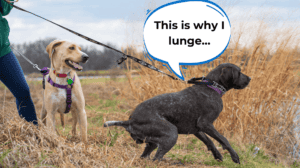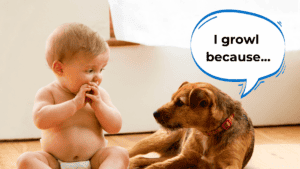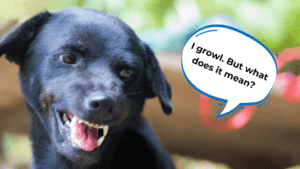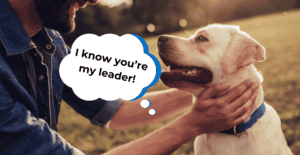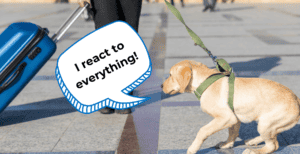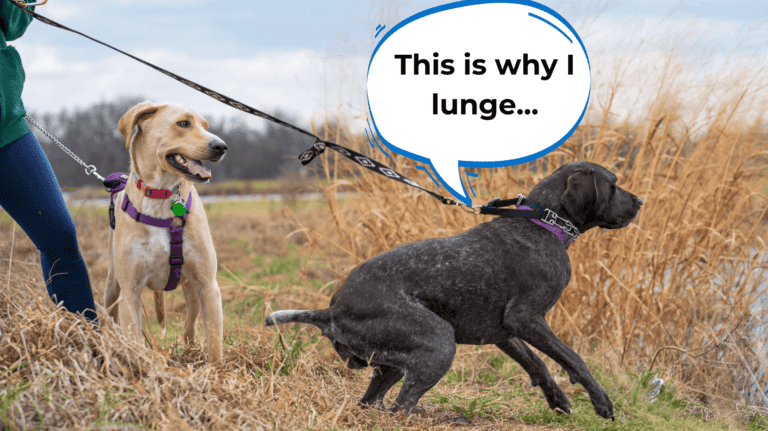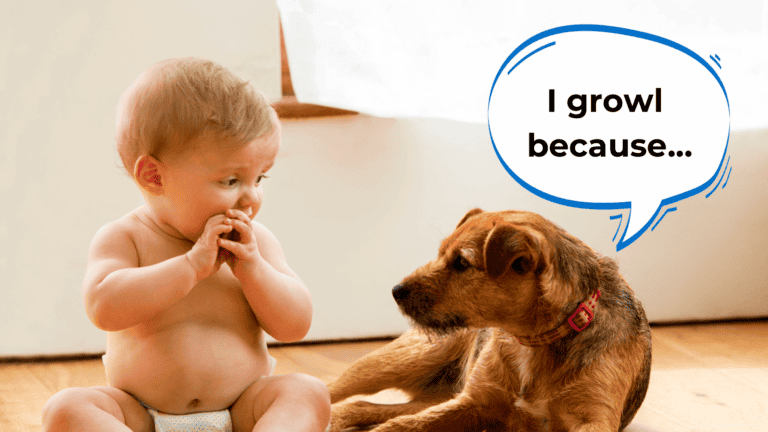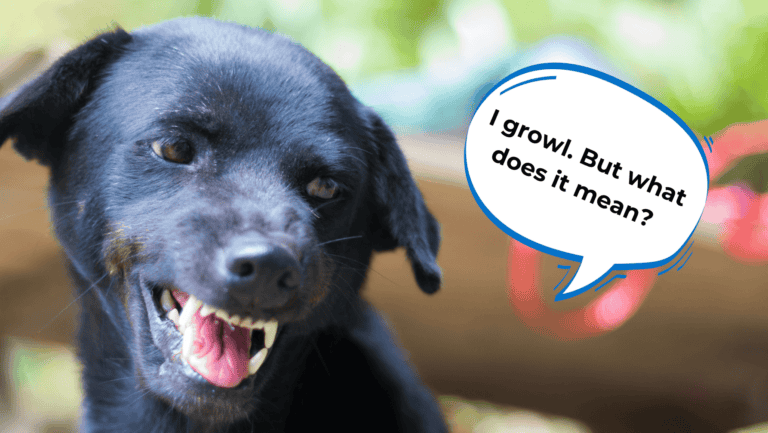If you are wondering how to deal with an overprotective dog, you MUST know that these animals are NOT naturally inclined to cause harm.
In fact, dog aggression from overprotectiveness is a case of a dog’s desire to keep harm away from you and the property they’re protecting.

But when is a protective dog too much? And how do you deal with an aggressive, overprotective dog?
In this blog, we’re going to talk about dog aggression coming from overprotectiveness and how you, as a dog owner, can help your dogs.
Read on to learn more.
Key Takeaways
- Giving dogs treats hoping it will stop their overprotectiveness doesn’t work at all. Your dog has to know they can count on you to protect them.
- Being the leader who shows your dog that you are in charge can ease your dog’s overprotectiveness.
- “Security dog” and “border patrol dogs” are just some examples of the types of overprotective dogs. Although different, both dogs exhibit behavior connected to their need to protect: barking, charging towards the threat, even biting!
REACTIVITY SOLVED (NO FOOD, NO FORCE)
Table of Contents
- How to Deal with an Overprotective Dog: Why Are Dogs So Overprotective?
- What Role Do You Play in Dealing with an Overprotective Dog: Take Charge!
- 9 Signs of an Overprotective Dog
- 8 Ways To Deal with an Overprotective Dog
- How to Deal With an Overprotective Dog: The Dog Calming Code Can Help You!
How to Deal with an Overprotective Dog: Why Are Dogs so Overprotective?
What is an overprotective dog?
This kind of dog is easy to spot. One of the overprotective dog types is the “security guard” dog.

They usually spring up at the very first sound of the doorbell. Their energy levels can go from 2 to an instant 10! They get up from their little corner to run and bark at the person or animal on the other side of the door.
The other kind is the “border patrol” dog. This overprotective dog restlessly goes around the property checking on gates and fences and making sure nothing gets in.
Although different, these dogs exhibit aggressive behaviors that drive their dog owners crazy.
JOIN MY FREE REACTIVITY CLASS
But really, what causes a dog to be overprotective?
Dealing with an Overprotective Dog: This Dog Thinks They Are in Charge
The number one reason for a dog who charges towards the door from the slightest knock or from a doorbell is this: they think they’re in charge.
Let me explain through an analogy…
Let’s say you come visit my house.
I ask you to sit, give you refreshments, and entertain you with conversation.
All of a sudden, the doorbell rings. Will you get up to get it?
You would probably say “No, I won’t because it’s not my house.” You know that it’s not your job to answer the door.

That’s the homeowners job because they’re in charge of everything related to their home.
And it’s the same with our dogs: because they think it’s their responsibility to answer to anyone who comes near the house, they go frantic at the sound of a doorbell, or bark when someone gets too close to your property.
They think they’re the leader of the house, so they are the first to the door.
They think they’re in charge of you and the property, so they rove and guard non-stop to keep you safe.
In short, these dogs are stressed, agitated, exhausted, and just can’t relax. All they have on their mind is protect, protect, protect.
So how can you help?
LEARN THE DOG CALMING CODE (FOR FREE)
What Role Do You Play in Dealing with an Overprotective Dog: Take Charge!
In your relationship with your dog, who is responsible for answering the door?
You could say that “My dog knows I am the one in charge.”
But do they really?
If your dog believes they are in charge, they will continue to be aggressive towards anyone near the door or fence.

The “security guard” and the “border patrol” dogs are constantly barking at the door, constantly patrolling the area with an aggressive energy because they think they’re in charge of it!
You're a big deal in your dog's world, and that can sometimes lead to them being a tad overprotective. In your dog’s eyes, you and the property are priority #1.
But you don’t want that! You just want your dogs to be calm and chill, and let you do all the worrying.
FREE REACTIVITY MASTERCLASS
Here’s where the challenge comes in.
You’re probably thinking “I need to get a training program to stop this aggression.” A good move, yes. But which program?
Because here’s what I’ve observed so far: most programs aimed at stopping overprotectiveness by just giving dog treats so they will stop worrying.
Treats and rewards are not enough. You have to learn how to show them they have NOTHING to worry about.
How do you do this?
How to Deal with an Overprotective Dog? Be the Pack Leader By Showing Them You Deal with Danger!
Remember this ONE CRUCIAL TRUTH before we discuss additional steps to handling an overprotective dog:
Your dog is overprotective because they don’t see you as the leader who will do the protecting.

“But Dan, I do all my best to protect my dog!”
I have no doubt you do.
But dog psychology is more complex than what us humans understand. Your actions can send your dog a different message.
(Dog psychology comes with various concepts that are essential for dog owners to understand. I talk more about cracking the dog code with my online training program The Dog Calming Code™️.)

The bottomline is telling your dog “Don’t worry, I’m in charge here” just won’t do it.
So how do you show your leadership, especially when it comes to answering the door?
Here are several examples of what you can do (taken from Doggy Dan’s Golden Rule #4: Dealing with Danger).
- If your dog is barking at someone from a distance, show them that you acknowledge what they’re barking at BUT DON’T MAKE A BIG DEAL OUT OF IT.
- Calmly reassure the dog that you saw their perceived threat, and they have nothing to worry about by telling them “Thank you” and walking away.
- If your dog still barks after doing this, take them to a room to help them let some steam off and bring their energy level down.
- Always make sure your energy is not stressed or agitated as well. Because even if you say “Thank you!” and walk away IF your energy level is anything BUT CALM, your dog won’t be calm.
These are just some examples of dealing with a dog who can’t stop barking and worrying about their perceived threat.
(Important note: Remember, it’s you who needs to do the worrying!)
I talk more about dealing with perceived danger in Doggy Dan Golden Rule #4. I have a blog dedicated for this which you can check out here.
GET MY 5 GOLDEN RULES FOR FREE!
9 Signs of an Overprotective Dog

They’re Constantly Vigilant
Dogs, with their innate sense of alertness, are often found keeping a watchful eye on their surroundings.
They are always alert, prepared to notice any possible intrusions or disturbances, whether it's the sound of leaves rustling or distant footsteps.
Standing Alertly
In the presence of unfamiliar sounds or movements, dogs can be seen standing tall, ears perked up, and muscles tensed, all in preparation for any potential encounter.

Their alert posture serves as a testament to their acute awareness and readiness to react.
They Center Their Focus on a New Stimulus All the Time
At the slightest hint of a new presence in their environment, dogs swiftly redirect their attention.
Their keen focus on the newcomer reflects their instinctual need to assess potential threats or new companions, gauging whether they pose any danger or warrant a friendly approach.
REVERSE REACTIVITY (FREE WEB CLASS)
Growling or Barking at Perceived Threat
When sensing a possible threat or intrusion, dogs often resort to vocal cues, expressing their unease or asserting their authority.

Their growls or barks serve as a clear warning, communicating their readiness to defend and protect their territory or loved ones.
Going Back and Forth Between You and Perceived Threat
In moments of perceived danger, dogs instinctively position themselves as a shield, placing their bodies between their loved ones and the potential harm.
This protective behavior showcases their loyalty and unwavering commitment to ensuring the safety of their human companions.
Returning to Normal Once the Threat is Gone
Once the situation deems itself safe, dogs swiftly ease back into their usual demeanor, relinquishing their defensive stance and resuming their ordinary activities.
Their ability to swiftly switch between defense and ease highlights their responsive and adaptable nature.
REACTIVITY SOLVED (NO FOOD, NO FORCE)
Overly Aggressive, Threatening Stance
In the face of what they perceive as a genuine threat, some dogs may adopt an overtly aggressive posture, with their heads held high and hackles raised, signaling a clear message of intimidation.

This defensive stance is a visual display of their readiness to confront and defend against any potential harm.
Overreacting to New Situations
In some cases, dogs may showcase an exaggerated response to new or unfamiliar situations, often reacting with heightened anxiety or aggression.
Their overreaction might stem from a place of heightened protectiveness, where they interpret the unknown as a potential threat to their territory or loved ones.
Urinating to Mark Territory
Through the act of urinating in specific locations, dogs establish their territorial boundaries, leaving behind scent markers to communicate their ownership or presence.
This instinctual behavior serves as a means of asserting their claim over their environment, highlighting their innate need to protect and secure their space.
JOIN MY FREE REACTIVITY CLASS
8 Ways To Deal with an Overprotective Dog
Be the Leader in Charge of EVERYTHING
To address dog aggression problems such as overprotectiveness, it is important for dog owners to take control of their dog's entire life, not just when there is a threat.

The reason behind this is you can’t tell your dog that you’re in charge of danger, while you let them take charge of everything else.
It will confuse your dogs.
Most dog owners don’t know their dog is already in control of EVERYTHING in their home.
This is where you take the reins.
This is the heart of my online dog program, The Online Dog Calming Code. I will teach you not just to tell the dogs “don’t worry,” but how to show them you’re the leader they can hand over their worries to.
Set Boundaries
Dogs are fast learners; they catch up quick especially when their owners set clear and consistent boundaries.
If you have an issue with your dog running to the door every time someone goes to your house, establish a boundary.

You can teach boundaries better through timeouts.
Whenever the dog starts barking and charging towards the door, calmly bring them to a room for a timeout. It’s also a great way for them to de-stress and steam off from the red zone.
LEARN THE DOG CALMING CODE (FOR FREE)
Make Sure Your Energy Says “There’s Nothing to Worry About”
Dogs get your message clearer if your words match your energy.
You can shout “Stop it!” all you can, but if your dog picks up a stressed, angry, anxious, or worried energy, they won’t stop it.
Your energy matters to your overprotective dogs more than your words.
Don’t Give Cuddles and Attention… Especially If Your Dog Crossed the Boundary
After fiercely barking their hearts out to protect you, it’s tempting to just give them a hug and say “Oh, you’re such a good dog!”
But let me tell you this: don’t!

Giving affection to your dogs even after they exhibit overprotective aggression can confuse them. Affection can encourage them to continue the behavior… the very behavior you want them to stop.
Be Aware of the Warning Signs
Stay attentive to any changes in your dog's energy levels or behavior. If you notice any signs of heightened protectiveness, assert control immediately.
Redirect their attention and help them bring their energy levels down.
Have a Designated Room for Your Dogs to Let Off Steam
Create a safe space where your dog can unwind and release built-up tension.

Encourage them to relax and de-escalate any anger or stress they may be experiencing. Providing a designated room or area can give them the necessary privacy to regain composure.
Give Distance and Introduce Slowly
When introducing your dog to new people or environments, ensure you maintain a safe distance initially.
Allow your dog to adjust gradually to the new stimuli, helping them feel more at ease and less threatened. Slow and steady introductions can promote a sense of security and comfort.
FREE REACTIVITY MASTERCLASS
Socialize Your Dog
Early and consistent socialization can be pivotal in preventing overprotective behavior. Expose your dog to various social situations, other dogs, and people from a young age.

If your dog lacks socialization, seek guidance from a professional canine behaviorist. Implement a gradual and safe socialization plan to help your dog adjust positively to new interactions and environments.
How to Deal With an Overprotective Dog: The Dog Calming Code Can Help You!
Here’s the goal: to make you the strong, sure leader that can handle danger.
It’s the only way to make your dogs feel that they no longer have to spring to the door to do the protecting. They understand it’s your job. Even when the doorbell rings, they won’t have the tendency to react aggressively.
I’ve seen this online program work for 88,000 dogs and I have the full confidence it will work for your aggressive, protective dog as well.
To learn more about The Dog Calming Code and how it can transform your protective dog into a chill, calm pet, you can check the program here.

~ Doggy Dan




